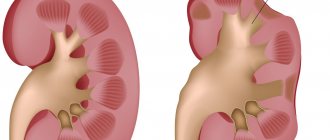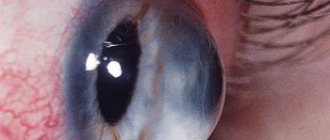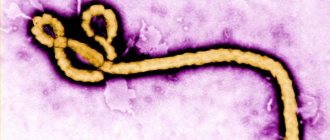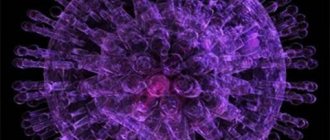Local therapist
Serebryakova
Oksana Evgenievna
Experience 27 years
Local therapist, candidate of medical sciences, member of the Russian Scientific Medical Society of Therapists
Make an appointment
Scurvy is a pathology from the group of vitamin deficiencies that develops against the background of vitamin C deficiency in the human body. Primary signs of the disease include bleeding gums, dry skin, hemorrhages in the joint cavity, and loosening of teeth. Confirmation of the diagnosis by a doctor is carried out after examination, history taking and radiography.
Symptoms of scurvy
Symptoms characteristic of scurvy are as follows:
- formation of hemorrhagic rash (various intensity of hemorrhage on the skin);
- bleeding gums;
- teeth begin to become loose (possibly even falling out);
- pain in the limbs, joints;
- frequent bleeding (nasal, from the oral mucosa);
- general weakness;
- fast fatiguability;
- decreased immunity;
- severe swelling.
At a late stage of the disease, the following are possible:
- bone fractures;
- blood in the stool;
- sharp pain in the abdomen;
- gangrenous gingivitis (death of gum tissue);
- hemorrhages in internal organs.
With a lack of vitamin C, symptoms begin to appear after 4-6 months. In the complete absence of vitamin C, clinical signs appear after 1-3 months.
If you experience similar symptoms, consult your doctor
. It is easier to prevent a disease than to deal with the consequences.
Diagnostic measures
The clinical manifestations of the pathology are specific, which simplifies the diagnosis. The patient is examined by a gastroenterologist. The doctor interviews the person and takes an anamnesis. Changes in the condition of the skin, oral mucosa, teeth, joints, nails, and hair are recorded.
The absence of obvious reasons for vitamin C deficiency in the human body becomes an indication for instrumental diagnostics. If signs of hepatitis or pancreatitis are detected, an ultrasound examination of the abdominal cavity is performed. Hemorrhages into the serous cavities are recorded using radiography.
Analysis of the patient's biomaterials in the laboratory allows us to confirm the preliminary diagnosis. In controversial cases, plasma ascorbic acid concentrations are screened.
Prevention
For the disease “scurvy,” prevention includes:
- rational and balanced diet (regular consumption of foods high in fiber (vegetables, fruits) and vitamin C (fresh vegetables and fruits, especially citrus fruits));
- taking medications containing vitamin C (the dosage and duration of administration are prescribed by the doctor).
This article is posted for educational purposes only and does not constitute scientific material or professional medical advice.
Reasons for the development of the disease
Ascorbic acid ensures the implementation of many biochemical processes. The endocrine glands are not capable of producing this substance. The compound enters the human body with food and is absorbed in the duodenum. Acid reserves are created in the thyroid gland and the adrenal medulla, the total volume is 1500 mg. The causes of scurvy may be malabsorption of vitamin C or insufficient intake due to a poor diet.
The absorption of ascorbic acid can be hindered by:
- changes in the structure of the intestinal epithelium;
- acute pancreatitis;
- prolonged diarrhea.
The diet that a patient follows can play a significant role in the manifestation of symptoms of scurvy. The daily intake of vitamin C should be at least 70 mg for adults and 30 mg for children. Ascorbic acid deficiency leads to the development of pathology within 4-12 weeks.
Pathological anatomy
The general pathological picture of scurvy is characterized by a combination of signs of exhaustion, hemorrhagic diathesis, gingivitis, disorders of pigment metabolism and peculiar changes in the skeletal system in the form of pathological bone formation.
Exhaustion is manifested by general weight loss mainly due to loss of muscle tissue, rather than fatty tissue and atrophy of internal organs.
The skin is dark, slightly flaky, in places covered with elements of scurtain purpura of varying sizes, which are foci of hemorrhagic impregnation of the dermis and subcutaneous tissue, especially around the hair follicles. The epithelium in these areas peels off in the form of dark red blisters. Skin hemorrhages are usually found on the flexor surfaces of the legs, on the torso, and much less often on the arms, head and neck. Hemorrhages are often infected, ulcerated, and the ulcers do not granulate well. Microscopically, the majority of hemorrhages occur per diapedesim. In the skin, deposits of hemosiderin are often detected, located along the vessels in the elements of the histiocytic infiltrate.
Hemorrhages are detected when examining almost all connective tissue structures. They are found in fascia and aponeuroses, in fatty tissue, in muscles, bones, synovium and joint cavities, in connective tissue along the nerves and blood vessels, as well as in the intestines, where they usually surround the follicles, often ulcerated. Less common are hemorrhages in the interstitium of the lungs (mainly in the posterior sections), in the lymph nodes, in the epicardium, in the kidneys; sometimes hemopericardium and hemothorax are found. Hemorrhages in the muscles, more often occurring in young people, are detected in areas located closer to the tendons or places of attachment to the bone; they continue along the muscle bundles and infiltrate the connective tissue. Subperiosteal hemorrhages are most often localized in the area of the epiphyses of tubular bones. Usually they have the appearance of hemorrhagic impregnation, spreading through the connective tissue layers; less often, hematomas are formed, pushing apart the muscles, peeling off the periosteum. In some cases, foci of inflammation are found, usually of a hemorrhagic nature.
Scorbutic gingivitis is manifested by swelling and loosening of the gums. The mucous membrane of the gums becomes blackish-blue. The bluish, swollen edges of the gums that are slightly behind the teeth and the gingival papillae that bulge between the teeth bleed; they are necrotic and ulcerated; the epithelium is torn away in layers. Teeth easily become loose and fall out. The addition of a secondary infection is accompanied by the development of ulcerative stomatitis and gingivitis.
Changes in internal organs include their atrophy and the presence of pathological processes that arise as complications of scurvy. Parenchyma atrophy is noted in the myocardium, liver, and thymus gland. The adrenal cortex is dilated and swollen; The chromaffin reaction of the medulla is reduced. Sluggish regenerative processes in the red bone marrow are manifested by general anemia. In the terminal period, edema and dropsy of the serous cavities occur.
Changes in the skeletal system during scurvy are very characteristic. In children (infantile scorbutus, “rachitic scorbutus”), the anterior ends of the bony part of the ribs are predominantly affected, that is, the zone of connection of the bone and cartilaginous parts of the ribs. In the part of the rib in contact with the cartilage, the number of osteoblasts decreases, atrophy of the bone crossbars develops, and their fractures occur. Hemorrhages and fibrin deposits are observed in the bone marrow cavities and under the periosteum. As a result of these changes, thickenings appear in the areas of the osteochondral junction, and subsequently, separation of the cartilaginous part of the rib from the bone. With such damage to several ribs, especially bilaterally, the sternum, together with the costal cartilages, sinks and becomes mobile. In this case, the pressure from the sharp edges of the anterior ends of the bone parts of the ribs causes skin pressure sores, which are the gateway to secondary infection. In adults, the main changes are localized mainly in the epiphyses of the tubular bones of the extremities. In severe cases of scurvy, pronounced changes are also observed in the spongy bones: osteoblasts disappear, bone crossbars become thinner. Due to atrophy and osteoporosis, cancellous bones become soft and are often easily cut with a knife.
When complications of scurvy occur, intestinal lesions are most often found in the form of catarrhal enteritis, follicular and follicular-ulcerative enteritis and colitis, sometimes taking the form of diphtheritic colitis in dysentery. In some cases, vein thrombosis and hemorrhagic intestinal infarctions are observed (see). Often with scurvy there is an exacerbation of the tuberculosis process, in particular in the lungs, which takes on a pronounced exudative character (see Tuberculosis of the respiratory system). Exacerbation of tuberculosis and complications that often occur with scurvy in the form of sepsis (see), pneumonia (see), gangrene of the lung (see Lungs, diseases), severe enterocolitis are most often the cause of death in patients with scurvy.
Laboratory research
Laboratory tests help distinguish scurvy from diseases with similar symptoms, determine the presence of concomitant pathologies and determine their severity. A blood test for vitamin C concentration is necessary to make a diagnosis. Large percentages of red blood cells will be detected in feces and urine. On an x-ray of the joints, the doctor will see the different stages of osteoporosis.
Scurvy has a number of serious complications, so timely qualified diagnosis with the correct staging plays an important role.
Infusion of black currant berries
As noted above, black currant also has a high content of vitamin C. 100 grams of berries contain 200 mg. The infusion recipe is very simple. Take 2 tablespoons of dried berries and pour two glasses of boiling water over them. Leave the drink to brew for 1 hour. After which the product is ready for use.
Also, dried currant twigs and leaves can be added to tea leaves and consumed with black tea.
It is absolutely known that the most important role in the prevention of ascorbic acid hypovitaminosis is played by a proper diet. It is also necessary to engage in educational activities, especially in marginalized sections of the population. Promoting a healthy lifestyle is an integral part of preventing this disease. Dietitians should educate the population on rational nutrition and advise on the correct choice of a particular diet. Elimination of various types of pathologies of the gastrointestinal tract, antiseptic treatment of foci of infection, and administration of vitamins to people at risk are the most important aspects that prevent the development of a disease such as scurvy.
Flow
The evolution of scurvy is usually expressed in the following three periods:
• The period of onset of the disease, during which symptoms of depression and weakening predominate. During this period, the gums appear slightly swollen. Towards the end, the skin is often covered with hemorrhagic spots.
• Stationary period, which is characterized by significant changes in the gums, superficial and deep hemorrhages, and a general scurvy condition.
• A period of complications in which all symptoms worsen and hemorrhages occur in all organs. Septic and putrefactive phenomena develop. The usual outcome of illness that reaches this period is death.
Most often, scurvy stops before reaching the third period, which in this case is replaced by a period of recovery, slowly leading to a cure.
Recovery always takes a very long time. Absorption of blood effusions occurs gradually, and ulcerations heal very slowly. The recovery period is often interrupted by the return of the disease.
The duration of scurvy cannot be determined with precision. In subjects with mild scurvy, the duration of the illness cannot exceed several weeks. However, even in some mild cases, the illness can last several months. Then its symptoms are even less pronounced. Patients experience little noticeable swelling of the gums and, from time to time, mild bouts of hemorrhage. General symptoms are often so mild that the patient does not need to stay in bed.
When scurvy appears in severe form, it usually develops within 2-3 months. The third period begins no earlier than a month and a half or two from the onset of the disease.
Recovery is the most common outcome of the disease. Death, which is the outcome of some severe cases, usually occurs during cachexia. It is sometimes sudden, caused by fainting. Sometimes death may depend on some complication.
Story
These days, many people don’t even know what scurvy is. And doctors easily diagnose and treat this disease. However, scurvy used to be a real curse of sailors. So, in 1870, out of 12,000 crew members of the British fleet, 1,500 died from it. Sailors at that time ate croutons, pickles, dried meat and fish, products that simply did not contain ascorbic acid. Doctors treated patients with bloodletting, vinegar, hydrochloric acid, and mercury. Thus, they only aggravated the well-being of people suffering from scurvy.
All this led to an epidemic of scurvy in the 17th and 18th centuries. Over the course of the disease, millions of people have died from it. The solution was found only at the end of the 19th century by the famous doctor Gilbert Brain. He found out that scurvy is a viral disease, and also, as an experiment, introduced lemons into the diet of sailors, which immediately reduced the mortality rate from the disease by half.
Diagnostics
Since the disease has quite specific symptoms, it is not difficult to diagnose it. Diagnosis of scurvy consists of the following processes:
- conducting a complete survey of the patient regarding the appearance of the first signs of the disease, what this could be related to, and how the symptoms changed over time. Find out how, what and when the patient eats;
- collecting urine and blood for testing;
- consultation with a nutritionist;
- radiography.
Therapy
Treatment methods are determined by the clinical picture observed in the patient. In mild cases of pathology, a person undergoes outpatient treatment under the supervision of a nutritionist. Moderate and severe degrees require hospitalization and bed rest.
Dietary therapy remains the main non-drug treatment. The doctor calculates the daily calorie content of food consumed by the patient. The gender, age and occupation of the child or adult are taken into account. The diet includes foods that serve as a source of vitamin C - leafy vegetables, red fruits, citrus fruits. The maximum amount of ascorbic acid is contained in dry rose hips: up to 1200 mg in every 0.1 kg of weight.
Moderate to severe scurvy requires drug therapy. During it, metabolic processes are corrected, the main symptoms of the disease and emergency conditions are relieved. Etiotropic treatment is aimed at eliminating gastrointestinal pathologies. The patient receives enzymes (pancreatin, enzymes of non-animal origin). Additionally, ascorbic acid is prescribed (orally or parenterally).
Symptomatic treatment is aimed at stopping bleeding. Doctors use potassium chloride or tranexamic acid. In the event of significant blood loss, plasma or red blood cell transfusions are performed.
Rose hip decoction
Take a handful of dried rose hips, pour 0.5 liters of boiling water and leave to brew for 10 minutes. To do this, you need to choose a container with a tight-fitting lid. After which the broth must be poured into a decanter or jar and allowed to brew for 6 hours. To get rid of leaves and peel, strain the broth through a sieve. If desired, you can add honey or sugar to the broth. Take half a glass 3 times a day before meals. The broth should be stored in a cool place for no more than 3 days.










